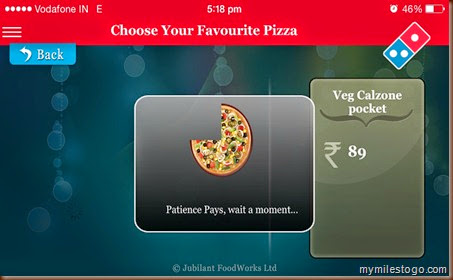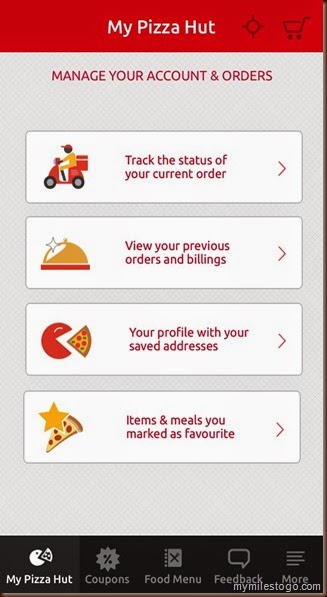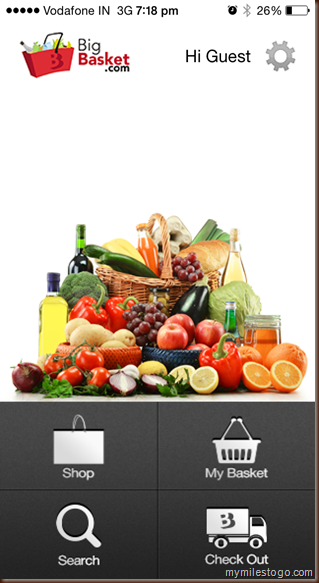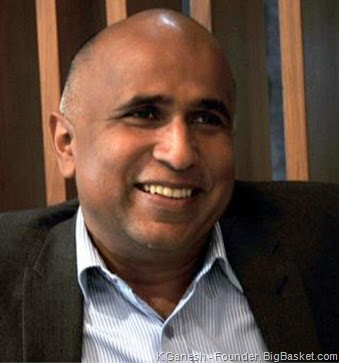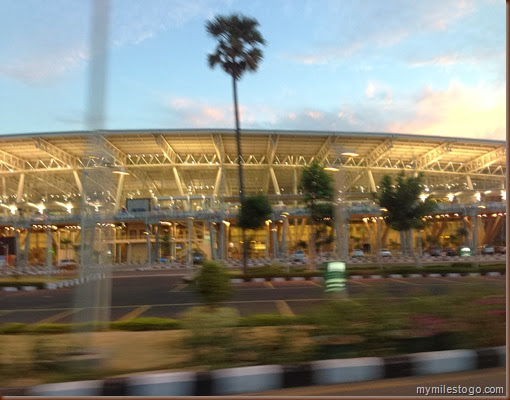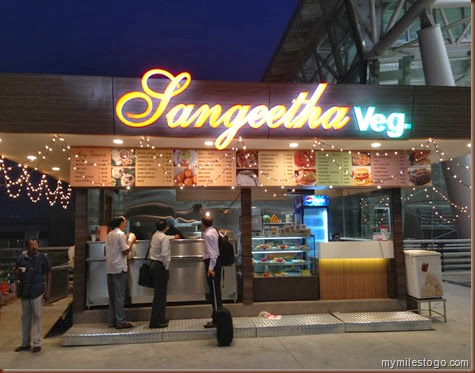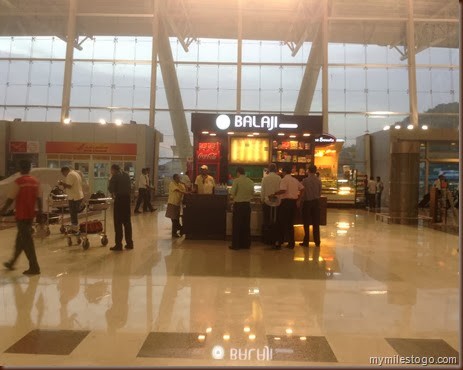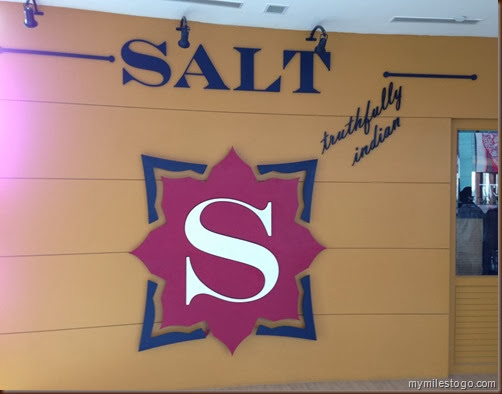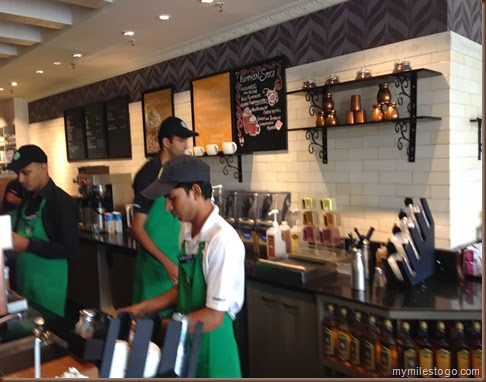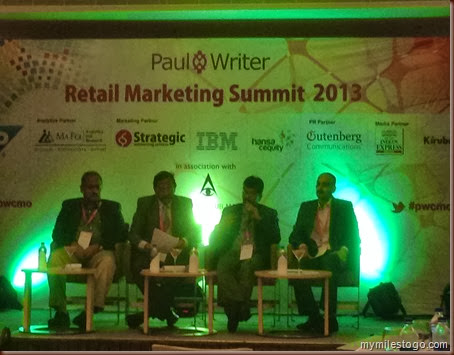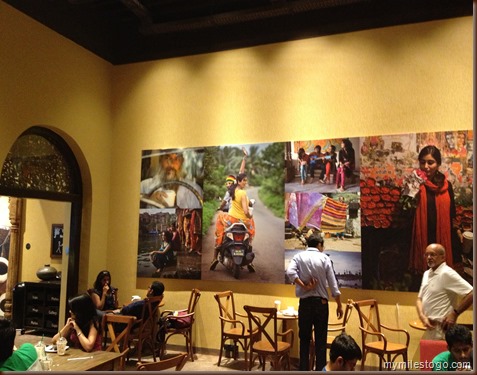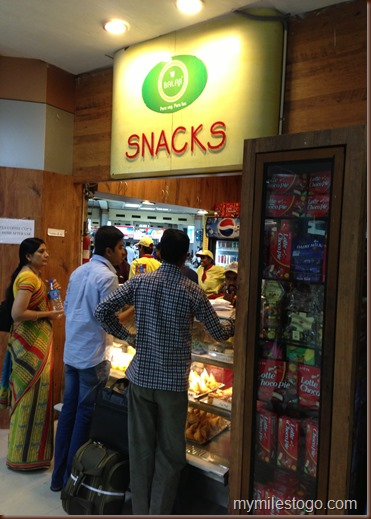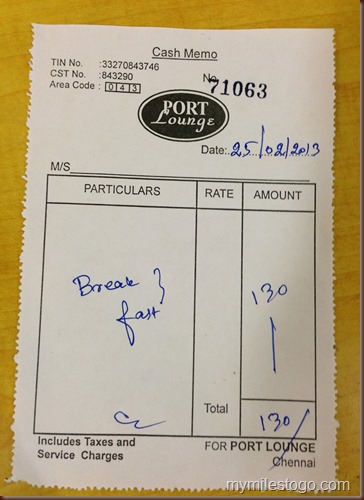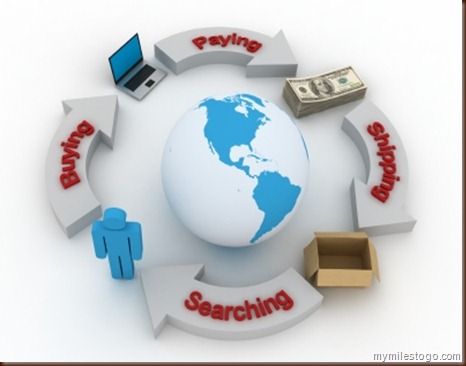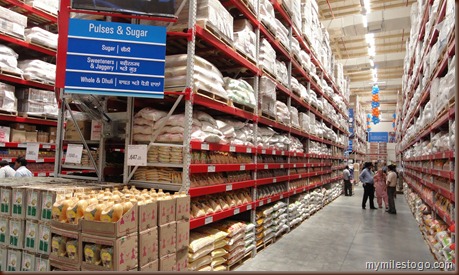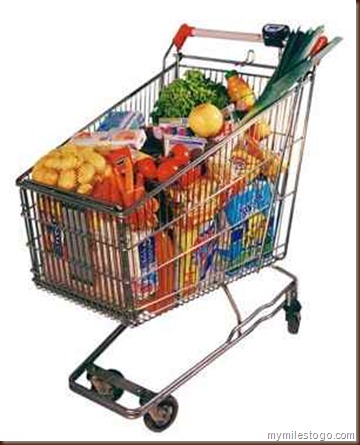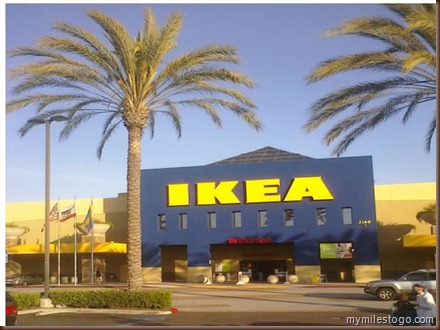23 October, 2016
UDAN - a A Flight for Retailers
23 October, 2014
EMIs to the rescue of Retailers
19 October, 2014
The iPhone Saga continues...
24 July, 2014
Online Dining
I have enjoyed my pizzas better at the restaurant that at home, all along. It is more to do with the fun of dining – you plan a trip to the pizzeria, a walk or a short drive usually, or even at a Mall after finishing retail therapy. I fondly remember the bottomless Coke and unlimited Pizzas at Pizza Corner in Chennai in the late 90s during my most cherished college days with my gang of friends. Have ever since been a fan of pizzas and the love has only been growing. Frankly, I like pizzas from different places, be it Dominos or Pizza Hut, California Pizza Kitchen or standalone indie restaurants. One of my most favourite of course has been from “Italia”, the fine dine restaurant at The Park, Bangalore. For me, Pizza is an all time snack. I am usually game for a pizza at any time of the day (or evening) although I avoid a heavy dinner of pizzas. In fact, the love of pizza is more because of the yummy accompaniments, the cheese garlic bread and an array of toppings, especially the gherkins and olives. Am not a big fan of coloured flavoured colas and would rather prefer a strong coffee if not a lemon ice tea to drown the heavy food.
What I like best is food to be served hot and fresh from the kitchen. Haven’t been a big fan of home delivery or takeaways since I feel that the freshness is somehow lost, especially the international fare such as pastas, pizzas etc. although Indian food is still doable – we have an option to reheat the curries and biryanis at home once again which can’t be done with pizzas and pastas. Have avoided ordering pizzas at home for a long time now since I have had not-so-great experiences in the past, but that was probably because I used to live in Bangalore where the ambient temperature outside is not conducive to serve hot food by road.
This Football season, I decided to order pizzas at home. No, I don’t follow the game but why not enjoy the delicious offers provided by F&B Retailers! So, first it was Dominos followed by Pizza Hut. On the first occasion, the pizza arrived pretty late, almost 45 minutes since I ordered. I was very disappointed with all the promises made by the company on various media, but gave a benefit of doubt to the delivery boy – he must have had a lot of orders to fulfil and mine was probably the last one. So, I didn’t make an issue about it and just left it there. Yes, I would give them a try once again in future and I hope they live up to expectations.
On the next occasion, the pizzas were served hot and were in a consumable condition even after 20-30 minutes of being delivered at home. What was surprising was it was a Sunday and was the day of the “Final” match between the two teams. And yet, the pizzas were sent on time, well ahead of the promised time. They have a future customer for sure!
In both occasions, I used the mobile applications of both these companies. The UI for Dominos is a bit confusing while the one for Pizza Hut seemed much better. In fact, I had to switch over to the website while ordering for Dominos since that seemed to be a better option. The UI is perhaps not designed by retail experts and with consumer feedback, it lacks the sensibilities that customers look for, especially people of the older age and for women, both of these segments may not be very mobile savvy. Also, one of my friends quipped on his Facebook post recently how the delivery boys call a number of times to take directions. The Pizza companies can take a cue from Uber, the taxi service guys who have a GPS enabled map on their cell phones that help the drivers reach their destination without even calling once.
Mobile App Zomato also integrates Home Delivery along with providing reviews about restaurants and they are growing rapidly not just in India, but also internationally. Overall, I guess online dining, or rather online ordering is a great way to reach out to customers. It is also non-intrusive in a way. There is no need to call a number and go through the menu being repeated often – the menu is just there on the mobile app or on the website and helps users to choose what they want quickly and easily. Once customers are used to it, they would rather prefer this option instead of calling on the phone, whenever they desire to order food home. So, go ahead and try ordering on your phone next time. And yes, do take a minute to share your feedback. Happy Dining…
12 June, 2014
Online Grocery Shopping
There has been enough spoken and written about the Flipkart-Myntra deal. Online Commerce is no more a hype at the moment and there is no money to be made – that’s the response most subject matter experts are saying although they don’t want to be quoted since they are in various advisory capacities for many such companies. With a healthy two-digit margin, if offline Retailers are not able to succeed (read: profitable), then how would these companies survive- they ask. Having said that, there is not a single ECommerce company (in India) that has tasted profits yet. While many promoters have made millions of dollars collectively, the companies in question still remain unprofitable. I would presume that a very few of them would even be making unit level margins. Such is the discount structure and focus on Topline that these companies are almost forgetting that the main intention of a business is to create value through profitability and not just a valuation (to subsequent investors). Amongst the online frenzy across categories, the most dreaded and the most challenging category is grocery & daily needs including fruits and vegetables. Bangalore based BigBasket.com already has some headway while WeStaple.com from Noida and a few others who are regional players are taking the lead to establish their positions. Big Basket even has a Mobile app for Android and iOS from Apple. Take a look below at what their customers have to say;
https://www.facebook.com/Bigbasketcom
http://venkysundaram.wordpress.com/2013/05/29/why-i-stopped-using-bigbasket-com/
https://www.facebook.com/WEstaple
K Ganesh and his wife Meena Ganesh are an entrepreneur and angel investor-duo. BigBasket, which is run on a daily basis by the founders of e-tailer Fabmart, on the other hand, is one of India’s only online grocery stores. Online grocery stores have been seeing big traction around the world, as recurring orders prop up the profitability of the niche e-commerce category. “The Series B funding for BigBasket, which should close in the next three-to-four months, will be around $40- $50 million. We believe it has huge potential, with gross margins of nearly 20 per cent. Every order is profitable for us on BigBasket,” Mr. Ganesh told The Hindu.
Bigbasket founder Hari Menon, a successful entrepreneur who sold his brick-and-mortar retail chain Fabmall and Trinetra to Aditya Birla Group, is bullish. “It’s a huge, underserved market. Convenience is a major factor in our metros. We are finding that at least 85% of our customers return after the second order.” Menon said that revenue is increasing 20% each month. Bigbasket delivers 4,000 orders daily. In Mumbai, where the average size of an order is Rs1800, it does 800 deliveries each day. The site has served 200,000 customers so far and is expanding to Delhi and its suburbs. Menon said the company did Rs85 crore ($14.3 million) in revenue in 2013-14 and was on course to do Rs200 crore ($33.7 million) in sales this fiscal year.
While the category is exciting, most customers seem to expect the savings (on real estate) to be passed on to them, which in reality is not. If the Real Estate savings are about 10-12% on Sales, the promotions and marketing costs are much larger than that, especially the first-time acquisition cost of customers. While most players do not offer much of discounts for every item, there are chances of combined savings when you buy more quantities or multiple brands from the same company.
However, the overall sentiment seems to be simple- customers would buy products online only if they value their time more than the time spent in shopping offline at Retail Stores such as Spencers, Foodworld, Nilgiris, Big Bazaar, etc. India has a huge density of Kirana Stores while Organized Retailers in the big cities are already quite popular for more than a decade now. Fruits and Vegetables are still preferred to be bought from the vendors who sell fresh quality items, most of them directly sourced from the Markets. Retail FDI in multi-brand retailing is a contentious issue and even the new Modi-led Government is not actively pursuing this at the moment, for the benefit of the trader community who form a big chunk of vote bank.
Online Grocery, at the moment is restricted only to those who work in odd-times, say BPO Employees and many others who would find it difficult to shop at a nearby store especially those who live in far off suburbs. Having said that, the Kiranas are much more active these days, offering various facilities such as door delivery to credit facilities to their customers. While Online Grocery has a great future, time will be a real reckoner.
24 December, 2013
‘Santa’stic Holiday Shopping!
Santa Claus is a symbol of positivity and cheer, is well known. But he has been used as a constant Brand Ambassador by Retailers all over the world for quite many years now. Retail Stores use various displays of Santa at their precincts – some use static images and some use real men (or women) as real life Santas who give away candy bars and chocolates, goodies and gifts to children and elders who pass by the store. Santa is a global symbol of mass Retail Advertising, I would say. From Brown Goods to Apparel, all Retail formats use Santa in their copy some way or the other to connect with their audience and to bring the relevance of shopping during this season.
Afterall, Christmas is not just a religious festival, not atleast in India, one of the most secular countries in the world which embraces all forms of worship in its country. While it may be rare to have a Masjid, a Temple and a Church to share walls, its not uncommon for people across religions to celebrate each others festivals. Diwali and Id are two other festivals which are celebrated with much fervor all over the country. Christmas is no more restricted to Christians in India, but to the community at large. Many Hindu and Muslim homes decorate their premises with small and large Christmas Trees and Stars in their balconies and order Cakes to consume with their family and friends.
This Christmas Season, leading Retailers have used Santa in their campaigns. Pantaloon Retail, formerly owned by The Future Group and now by Aditya Birla Group has a “Buy 2 Get 1” Offer on its entire range of products. Shoppers Stop, India’s largest Department Store chain with over 61 outlets across the country has a 20% cash back offer in the form of Discount Vouchers. While the offer is only for a limited period, it would promote future walkins and shopping due the Discount Vouchers being provided with every shopping worth Rs. 5,000 or more.
Its also a great time to shop for Consumer Durables. Chennai’s leading Retailer Shahs and Viveks are offering massive discounts on LED Tvs, Washing Machines, Refridgerators, Cameras, et al.
Leading Brands like Apple and Samsung, surprisingly do not have any special schemes this Christmas – Diwali is probably a bigger festival for shopping personal gadgets. Now is the best time to fill your homes and wardrobes. So rush to your nearest Retail Store and shop more, save more! Have a Santastic Shopping Season. Merry Christmas.
07 November, 2013
Should Cafes Advertise?
I came across two special offers by India’s leading café chains Café Coffee Day and Barista today. One was through a email campaign – Buy One (Cappuccino), Get One Free. And the other was on newspapers – a combo offer of a Cappuccino and Egg Wrap at a discount of over 35%. And this was not an isolated case – both these café chains have been advertising in the mainline media for quite a while now and have also been continuously offering discounts over the past couple of months on their products. And all this for attracting footfalls into their cafes. with the onslaught of new café chains such as Starbucks over the recent months and those such as Gloria Jeans, Costa Coffee and other regional café chains, this space has been witnessing active poaching of customers. However, the regulars haven’s shifted loyalty, and that’s in the proof of the pudding. If that were the case, monthly sales of these chains fluctuate quite much, which has not been the case.
The biggest effort for cafes, contrary to what we believe is not just retaining existing customers but attracting new ones as well. CCD, as it is popularly known has followed a deep penetration strategy in large cities like Bangalore (where it is headquartered), Mumbai, Delhi, Hyderabad, Chennai and Kolkata. There are over 8-10 cafes of CCD within a 3 sq. km radius in Bangalore and all cafes are full with guests in peak times. Chennai, the hotbed of the South Indian Coffee culture has grown slower for CCD than other cities. That’s perhaps because the iconic Filter Coffee available in regional restaurant chains such as Saravana Bhavan, Ananda Bhavan, Vasantha Bhavan, to name a few are just unbeatable. The modern cafes also do not prepare the filter coffee and are more popular with the Cappuccino, the Latte, the Americano, the Espresso and ofcourse the cold coffee varieties which are difficult to replicate and are not easily available at other restaurants. Barista, which has slowed down its growth over the past three years and has focused on store profitability rather has been a pioneer of the coffee culture in the North, especially in Delhi. It has also been heavily advertising especially in conjunction with India’s leading newspaper Times of India about various offers.
So, this set me out thinking, “Should cafes advertise?”
The first answer that comes to my mind, is Yes, indeed they should. Every company must advertise its products and services through relevant media to their target customers. There are two kinds of advertising, I would say. One is the Corporate form; CCD came up with its campaign “sitdownism” a few months bacj which was an instant hit among the youth and was well appreciated within the Advertising faternity. And the other is advertising its products and services. But then, for cafes, in my opinion, being present in a locality is itself the best form of advertising. The store itself is an advertisement (and holds true for other retail formats too). Be it Malls or High Streets or Airports, Café are often point of direction or a meeting place. CCD at Bangalore Airport is located in a very prominent place such that no one can ever miss seeing it. Same applies for Gloria Jeans at Hyderabad Airport. However, At Delhi Airport’s T3 Terminal, Starbucks is quite tucked away and is almost missed by everyone.
The café should rather focus on the following to retain customers and to attract newer ones mainly through word of mouth;
- Ambience
- Convenience
- Familiarity
- Consistency
- Quality
These are some factors which potential customers would consider before they step into the café for coffee and conversations. Most of them, even college kids who are the most targeted for such cafes do not like to indulge on products that are heavily discounted. Or would like to be seen in places which are positioned as being “discounted”. I would wonder then, why do cafes scream so loudly that they have products which are “discounted” and gain adverse publicity. A satisfied customer would get ten more, goes an old saying. Cafes would do better in attracting newer customers if they provided top quality Coffee and other Food & Beverages to its customers with consistent quality and convenience (Read: Furniture, Sofas, Chairs, Plug points for Laptops, Wi+Fi, toilets) and make the place a familiar one for them to revisit. Afterall, cafes are meant to be the third alternative place after Home and Office and hence need to be the first point of recall for customers to walk into.
28 October, 2013
Chennai Airport is a sham(e)!
Even before I was part of the exciting world of Airports (in 2006), I have always been a big fan of the commercial opportunities at transit points, be it the railway stations or bus terminals, let alone airports. It was always a craze to have a cup of coffee at the railway station when we would go over to pick up our loved ones arriving from long distances, especially if the visits were made once in a couple of years. It was yet another joy to consume within trains – from Rajdhanis to Shatabdis to the passenger trains that would have hawkers selling everything from peanuts to guavas to oranges to chips and snacks. The joy of consumption during travel would somehow take over the joy of travel itself.
I have been using airports for just over 15 years now. My first flight was to Mumbai from Chennai to attend a job interview with a leading Retail Chain, with air tickets being sponsored by the company. That was the first time I was inside an Airport terminal, although I have been several times before that to drop off or receive guests from the Chennai Airport. The airport was and continues to be an important piece of the growth story of the state (of Tamilnadu) as well as served as a gateway to the rest of Southern India. In 2005, when the Government of India announced privatisation of Airports, the most protests were seen outside the Chennai Airport, the maximum being only second to the city of Kolkata. The staff of Airports Authority of India (AAI) and allied agencies protested that their livelihoods would be lost if the airport was privatised. The Government succumbed to pressure; Chennai’s loss was to the gain of Bangalore and Hyderabad. Both the cities claim to be the Gateway to South India and came up with world class private airports in the outskirts of the city in 2008, albeit the cities have been growing faster in their respective airport corridors over the past 8 years. Mumbai and Delhi somehow managed to keep the privatisation tab on. Delhi’s T3 Airport Terminal, which is managed by the GMR Group was built in record time and is now ranked among the top 5 in the world, consecutively for the past 3 years. Mumbai Airport, managed by the GVK Group built two new terminals for Domestic and International passengers and is struggling the political onslaught for space within its precincts which has been occupied by the public at large. Kolkata and Chennai Airports were allowed to be redeveloped by AAI and the work completed early this year with a time overshoot of over 9 months and a cost escalation of several hundred crores.
According to a recent survey by passengers on sleepinginairports.com, Kolkata Airport has been ranked 2nd worst in the world, with Chennai following a close third. What an infamy for a state which is considered the Detroit of India housing majors such as Ford, Nissan, Hyundai, Royal Enfield, Ashok Leyland, Hindustan Motors, MRF Tyres, Saint Gobain, Nokia, Samsung and many more! Chennai Port handles one of the highest loads in the peninsula. Chennai’s knowledgeable crowd contributes significantly to the Indian economy with Chennaites occupying important positions in the Indian Government as well as in global positions worldwide. And we have such a dud of an airport!
I feel quite disappointed, first as a citizen of the country and then as a resident of the city to pass through such an unglamorous airport every week, when I travel on work. The facilities are poorly planned. The Four Cs of airports, Comfort, Convenience, Cleanliness and Customer Service are shameful, to say the least. The only saving grace is the imposing façade which looks attractive for those passing by on the Grand Southern Trunk Road outside, but nothing more inside. There are no refreshments available outside the terminal, save for a sole counter which sells local cuisine at thrice the price of what’s sold downtown and a small kiosk of Café Coffee Day. The check-in hall has two ‘counters” where one needs to stand and eat snacks or sip coffee, just next to a dustbin which usually overflows, as though it’s a sort of a punishment. There is no bookshop or any other similar offering around; the only thing that solves passengers’ woes being the complimentary newspapers. The Departure areas are even worse. The layout of shops and other convenience is so bad that one would rather not step in than feeling disappointed thereafter. Cookieman and Frech Loaf are the only saving grace in the mess, although tehir products are meant to be take aways rather than consuming then and there. No Foodcourts or QSRs, just a restaurant located at the far end of the terminal. Services such as Taxi Operators and Forex are abysmally managed, with long queues for taxis in the peak hours in the evenings with unavailability of taxis for passengers. Airside services such as baggage handling are terrible. There are only four baggage belts and checked in luggage may arrive anywhere between 15-45 minutes after you land at the airport. There are only four aerobridges and the buses which provide ground transportation from the terminal to the aircrafts are poorly maintained. There is no complimentary Wi+Fi within the terminals. The airline staff and security staff from Central Industrial Security Force or CISF have a similar attitude as those who manage the airport – one that is indifferent and unfriendly. After all, it’s not just their fault since there is no one to oversee how good (or bad) their service towards passengers is.
I still believe there is hope. There is a plan to privatize the terminals through an open tender and the decision is expected to be taken by the end of this year with work to begin early 2014. Senior Executives from the companies which plan to bid had visited the airport to conduct a survey two weeks back were apparently welcomed by protestors from AAI, shooing them back not wanting privatization. But this time around, the Government doesn’t seem to back out. Hopefully, good sense would prevail and the airport would be handed over to a competent agency to serve passengers better.
An Airport is the face of a city and must display pride of place. It is the first point where international visitors to the country alight at. It is indeed important to put up a great one and maintain it as well. Lets hope.
28 September, 2013
Restaurants in Malls…
I was recently at Forum Vijaya Mall (Chennai), one of the newest in town. It was a Sunday and I was there for lunch, but the upper level of car parking was almost empty around noon, which took me by surprise. However, I was told two days later by someone who works for the Mall that there were over 45,000 footfalls on that day. The Restaurant that I was supposed to visit was located on the second floor of the Mall. As is usually the case, I checked the reviews of the restaurant on the Zomato app on my iPhone. Most of them had written good things about the place and its menu, not to forget their wonderful service. Here is a sample;
After such a good meal, the bill came to around 2500 bucks. "Not bad at all!", we thought, given the amount of food we had eaten. The service too was perfect. The waiters were very watchful, responsive and most importantly, proactive. – Amruth
A great place with tastefully done interiors and food! The options on the menu are limited, but every single item you are served taste good and also look really good on the plate! – Nandhini
If I have to be perfectly honest, there could not be a more unfortunate location to host such a lovely restaurant. A mall in Vadapalani is hardly any place for a classy place like this. Where venue fails, Salt takes North Indian Cuisine and gives it a fantastic twist, to ensure they stand out from the others. I expect much more of this restaurant in the near future. – Vaishnavi
Apart from many reviews, the one above set me thinking. Are Restaurants in Malls a viable option as compared to those on high streets? Are Mall shoppers the right TG for specialty restaurants in Malls? For the cost of operation in Malls, do restaurants make any money at all as a business option? When I spoke to the gentleman who runs the restaurant, he mentioned that the rent is about Rs. 65 per sft per month. Assuming they have an area of 2,000 sft, their rent per month would be about Rs. 1.30 lakhs. Add to that all other expenses which would be around Rs. 2 lakhs pm. On a conservative estimate of Rs. 15 lakhs of sales per month and an operating margin of 50%, the store would recover its expenses and have an EBIDTA of about Rs. 2 –3 lakhs per month. Given the way the outlet has been done, their investment would have been about Rs. 70 lakhs. So, the restaurant makes about Rs. 25 lakhs in profits (before interest and taxes a year) and would take about 3 years to break even.
On the contrary, business would be double, if not more were it to be on a High Street. There are a number of good quality specialty restaurants that are garnering those numbers already. So, why do Restaurants still prefer Malls? Perhaps, Brand building and familiarity. I don’t see any logical reason why someone would invest so heavily in a Restaurant inside a Mall and wait for 3-4 years to break even, when it could be faster in a High Street. What works best are for established brands such as Rajdhani, Sigree, Mainland China, etc. which have built reputation over the years and have hence chosen to be within Malls to leverage their brand value. For first timers in the Restaurant business, Malls are probably not the place to be in. This is not restricted just to Chennai but to other cities as well. I was at Chandigarh a few weeks back and they have a brand new Mall called Elante. I was almost alone at Chilis on a weekday evening, which is located in the same floor as the cinemas on the fourth floor of the mall. Restaurants in India’s most successful Mall, Select City Walk face the same fate – Restaurants are empty through the week with weekends being their only busy times.
So, what ails Restaurants in Malls?
Mall shoppers are mostly for spending time, probably window shopping. Conversions for Retailers too is lower than on high streets. The sheer number of footfalls make up for lower conversions and therefore helps Retailers and Restaurants. Unless you are a destination such as a Shoppers Stop, Lifestyle, Café Coffee Day, Starbucks, Subway, KFC, Pizza Hut, etc. These are places which plan to visit and hence drop by. Eating out is way to expensive these days, given the cost of ingredients. And Restaurants are trying their best not to upset their clientele by absorbing losses as much as they can. But then, consumers are staying away from eating places on a regular basis, as was the case a couple of years ago. For example, a could of years ago, the neighbourhood area of Koramangala in Bangalore had almost 50 eating joints, a third of whom have closed over the last one year.
Mall hoppers prefer food courts instead, which are usually pathetically planned. Mall planners in India somehow do not build large enough food courts, with thousand of chairs and a breathable exhaust system, that are modular and scalable as and when consumers increase. Instead, they try to lease all counters at one shot thereby not having scope for further expansion in future. What would cost around Rs. 600 for a family of three in the food court would probably cost over 50% more in a fine dine restaurant within the Mall.
Restaurateurs would do well to experiment new concepts first on the High Streets. That is where people frequent. There are no SCAM, errrr CAM expenses (Common Area Maintenance) on High Street Locations and no restrictions to close the restaurant at a stipulated time. The biggest benefit of being on High Streets is that the signage builds familiarity among customers over time. No wonder, there are more successful restaurants in India and the world over on High Streets!
21 September, 2013
Is there something as a Click-Only customer?
I was recently invited to attend the first edition of the Retail Marketing Summit Chennai, organized by Paul Writer, a leading consultancy which works in the Marketing space and advises various enterprises. The day was very exciting, with speakers from various Retail companies and Brands expressing their opinions. During the course of discussions, there was a topic which was discussed elaborately by the esteemed panel of guests as well as the audience. The topic of discussion was, whether there was someone called a “Click-only customer” that existed, who shops only online. There were ayes and naes but there was no single answer that could be fully validated. On the need for having an online presence and also focusing on the internet commerce business, Mr. Pattabhi Rama Rao, President of Australian Foods, which runs the Cookieman chain of stores felt that the market is too small at the moment on the internet and Retailers should continue to focus on the offline business by providing a better customer experience. In his own words, Man is a social animal and social interactions would never cease to exist. Pattabhi should be knowing well. With over a dozen years behind him in the Hospitality business, he started off the Cookie business 13 years ago. His brand of cookies were priced 10 times as that of a normal biscuit, although such a comparison is odious. He continued his focus in the business and now has over a 50 stores across the country. Most of his outlets are located in prime locations in Malls and Airports. Many of them bake fresh cookies at the store and the aroma spreads all over. It appeals to the senses and therefore converts a passerby into a customer, a customer into a loyalist and a loyalist into a brand ambassador. However, there is indeed an opportunity to sell categories like cookies online, although they are restricted to gifting and occasion based purchases.
In another panel discussion, Calvin John of Caratlane.com which specialises in the sale of jewelry products said that a customer has purchased 35 times in a few months from their site. And he felt that there were a small but growing species of “Click-only customers” who shopped extensively online. Jessie Paul, the convener of the event and also a moderator in one of the sessions confirmed this and said that she shops grocery extensively online at BigBasket.com, a Bangalore based start-up which has been slowly but steadily growing its online-only grocery business. With more and more people shopping online, it is all about convenience and discounts? Would the charm of shopping (at Retail outlets) dwindle over time? There are references to the West and how things have been changing in developed countries. A lady from the audience says that at Macys.com, sales were 37% of the total compared to just 26% in the previous year during the holiday season. And this was countered with a view that the sales increase was only during the Holiday Season when Macy’s was very badly organized at their stores. In India, the Books category was the first to succumb. Customers (in India) bought books online from Indiaplaza, Flipkart, eBay and the likes not just for convenience but also due to the generous discounts that were being doled out. But for those discounts, would customers have bought online? Perhaps yes, but a majority would prefer browsing and buying at their favorite books stores down the road such as Crossword.
The Internet Commerce business in India is still too small compared to the Offline one. As it is, Organized Retail in India is just under 10% of the INR 200,000 Crores market size. And e-commerce accounts for a decimal percentage of that. Although online retailers are showing double digit growth year on year, the business model is largely led by discounts and there is no hypothesis at the moment to prove that shoppers would still buy online at full prices, except for the gifting and essential categories. In my opinion, there is room for online and offline Retailers, But the bigger growth is offline, given the levels of broadband, internet and computer penetration in India. Payments gateways for credict cards, debit cards and Net Banking is quite limited too. In fact, I would place my bets more on m-commerce - shopping on smartphones which is still an untapped category. So, if you are a Retailer or a Brand, do build an internet commerce site now, if you already don’t have one. But remember, Retail is all about customer experience, and there is no better place than the store to demonstrate it.
22 March, 2013
Free Wifi will be a crowd puller for Retailers
I was at the Starbucks (SBUX) outlet in South Mumbai a few days ago. SBUX, in a JV with the Tata Group opened their first outlet in India in South Mumbai a couple of months ago. We had a long day ahead and decided to start our first meeting at this location for the sheer purpose of convenience. And ofcourse, some good coffee. Not awesome coffee, atleast for me. For which I would go back to Café Coffee Day, India’s largest café chain with over 1,400 outlets across the country which in my opinion still brews the best coffee in town despite lapses in service levels here and there once in a while. I was pleasantly surprised that the SBUX outlet offers complimentary wifi to those who wish to have a sip or grab a bite and spend time around at their cafe. Ofcourse, for me it wasn’t the reason why I chose my meeting venue there. But then, anything complimentary is welcome in this mean world, I say. So there I was, connecting all my three devices – the laptop, the iPadmini and the iPhone on wifi sponsored by Tata Communications (I felt it was a great marketing opportunity for them although they didn’t seem to use it as well as they could). I was online for over half an hour, finished my emails for the morning and was all ready to step out for my next meeting. The staff at SBUX, as friendly as they were, cheered every customer who walked in or walked out with a customary welcome or thank you respectively. Even as I was walking out, I wondered how happy I was as a customer using complimentary wifi at the café. I have a USB Data Card for my laptop, 3G for my iPadmini and iPhone. But then, its sheer convenience and speed to use wifi.
I have been extensively travelling since Aug. 2012, ever since I joined Royal Enfield where I am responsible for Dealer Development and expansion of other key pet projects for the company. I book my hotels myself, mostly on my Make My Trip Mobile App for the iPhone or on their website although the former is quicker and handy. While most of the hotels provide complimentary wifi in their rooms, only a few work seamlessly. It is usually patchy and the front office staff are usually unable to resolve the connectivity issue blaming it either on the service provider or sometimes on my device! (Yes, at a Delhi hotel, the staff claimed my iPadmini was faulty). These days I look for reviews on sites like Trip Advisor while choosing a hotel that provides complimentary wifi. And most reviews are correct and genuine, as I have experienced.
That set me thinking, what if other Retailers provide Wifi to their customers. Would it bring additional walk-ins? Would it increase the stickiness? Would shoppers be showrooming – a term used for browsing the store for products and buying them simultaneously online, thereby increasing ECommerce? If so, would it help Retailers like Shoppers Stop and Landmark Book Stores which have a strong offline/online connect? I guess there are no immediate answers. Large Department Stores in the West have a café within their store so bored husbands and boyfriends could have a cup of coffee or a mug of beer while their wives/girlfriends are shopping. These days, my friends who live in the West tell me that Wifi is almost free everywhere around, which prompts them to choose a location for their need – be it a restaurant, a café , a book store or any other format of Retail. In India, unlike in the West internet bandwidth is minimal and the speed is not all that great. Cost wise too, it isn’t worthy for most Retailers to offer it free especially for those shoppers who just pass by and not really spend at their stores. Bangalore International Airport, where I worked many years ago was the first airport in India to offer free wifi for one hour to passengers passing through the airport. And most airports in India follow the trend albeit for a shorter duration. Atleast, large Indian Retailers should try this concept. With increased penetration of smartphones and tablets, there is abundance usage of data these days. Lousy 3G speeds by most Indian mobile networks mean an alternative connectivity which is what wifi is all about. Facebook and Twitter updates by the minute are not uncommon for those who are hooked on to their devices.
It’s just a matter of time that free wifi would become the thing of the day. Even now, I am sitting at another airport lounge while transiting from one city to another. And yes, this article would be published using the free wifi. Stickiness, I would say that I visit the lounge as often as I could, and just because of the complimentary boring food. If only the Lounge was more exciting with various marketing promotions other than the TV which is blaring music and bollywood gossip from one leading Indian channel just because they probably provide free Televisions!
06 March, 2013
Consumer Spend – a loot at Airports
Recently, the Chief Minister of Tamil Nadu launched a populist move in Chennai to commemorate her birthday – a Government funded canteen that serves one idly (rice patty) for Re 1 (1 USD is Rs. 53 approx.) Yes, you read that right, One Rupee for a Idly. The move is aimed to cater to the needs of those under the poverty line and the poor, the working class such as drivers of autos, taxis, trucks and so on. This was a way Amma (mother) as she is fondly known as, appeased the vote bank. It is not sure how much this scheme is going to cause to the State. Ofcourse, these so called welfare measures are out of the state’s coffers – tax payers money. It so happened that the very next day since this scheme was launched, I was travelling through the Chennai Airport which is managed by Airports Authority of India, a government body which also operates the Airport in Kolkata. These two airports faced stiff opposition by the unions when the Ministry of Aviation privatized the other major airports in India in 2005 located at Delhi, Mumbai, Bangalore and Hyderabad. These six airports contribute to over 70% or more of the total air travellers in the country which is estimated at 110 million pax per year. While the Kolkata Airport has been recently renovated at a cost of Rs. 3,000 Crores, the Chennai Airport has been renovated for aorund the same cost and was inaugurated recently although the terminal buildings havent been opened up to the public due to lack of passenger amenities, a move that the Commercial Department of AAI conveniently seemed to have forgotten while planning the terminal building.
I was taking an early morning flight, a long one that too to Ahmedabad via Mumbai, an arduous 5 hour journey. And I was flying Spicejet, India’s most preferred low-cost airline which doesn’t offer complimentary meals on board, rather “sells” Cashews and Sandwiches at exorbitant prices. So I chose to have a quick breakfast before the Security Check for which I had quite some time. I walked up to the nearest F&B Kiosk which was serving hot food items. I ordered a plate of idly consisting two pieces and a Vada. The damage was Rs. 100/-. Yes, you read that right. Most passengers like me had no option but to pay such steep prices at airports to quench their hunger and thirst. What was more surprising is that the staff do not issue bills for every item sold on their own. Rather, the consumer needs to insist one of they really need one. I demanded one. And bingo, the staff tore a piece of paper from the manual bill book which had pre-written “Breakfast” in many of the bills. A closer look and the TIN numbers which are mandatory were indeed printed. But VAT or Value Added Tax and other charges such as Service Charge, Service Tax, etc. were not explicitly mentioned in the bill. I couldn’t blame the staff because they were just doing their job. I quietly paid the bill and proceeded to the aircraft. Afterall, this is not an isolated case at Chennai Airport. Almost all airports managed by AAI have the same issues more or less.
So, why are airport food products so expensive? To begin with, it’s the way the places are leased out by AAI. They follow an age-old practice of an out-dated tender system wherein those who qualify should propose a base price for the said location. H1, which is the highest quote gets selected. The tender period is usually for 3-5 years and doesn’t specify the architectural look and feel of the outlet. And most often, there is no seating option that is provided. This is completely contrasted by the approach taken by private Airport operators such as GVK and GMR Groups which manage Mumbai & Bangalore and Delhi & Hyderabad Airports respectively. The chosen partners need to submit and discuss schematic drawings and layouts with the airports and thereafter finalized. The design is not just contemporary but also functional and convenient. During my tenure at Bangalore Airport (BIAL) in 2006, we launched a global tender for Retail and F&B which attracted top players in the world to compete on a level playing field. The selection process was touted as one of the most transparent and efficient processes by international media which tracks Travel Retail.
AAI’s outdated tender system is the mother of all troubles. Coupled with it is its terrible space planning with outlets spread haywire here and there. Add to it, unqualified commercial guys who have no clue of global best practices and arbitrarily follow the H1 route to choose partners. It is quite obvious that they quote higher fees in the tender and therefore over charge customers. Branded players like Café Coffee Day, Subway, Pizza Hut, McDonalds, etc who also operate at airports follow a corporate pricing policy and provide bills with all statutory requirements. Due to high entry costs and related operating costs such as complimentary snacks and beverages to airport staff, most organized players do not even venture into this arena.
A popular Indian Aviation Entrepreneur who successfully started and shut a low-cost airline often used to quip that there is a private mafia now in the form of private airport operators. But then, the government operated airports are no better.
10 January, 2013
E-Commerce Economics–Questionable?
I have been without a pair of floaters / slippers for over two months now. Just that I’ve not been able to find a Retail Store closeby where I could find a couple of options. And I have another peculiar issue – that my foot size is 11 and I don’t get options so easily across brands. In fact, I ‘ve been buying my shoes from Brand stores located in North India since the body/foot sixe of customers is generally larger there than in the south (and it applies for other forms of retail such as apparel such as shirts, trousers, shorts etc. and even accessories such as caps and belts. In the month of Dec. 2012, I was traveling down siuth towards Coimbatore, Karur, Bangalore and a few others and then was in Bihar for a couple of days before ending the year in Kerala for a vacation with the family. And in the new year, I finally decided that I need to get a pair of footwear immediately. A chance view of an eadvertisement on some news website took me to jabong.com which offered a 70% discount on a particular model of Lee Cooper floaters and thankfully, they had my size as well. Bingo, and I ordered my pair immediately. The entire transaction from browsing to selecting the size to payment confirmation and then finally the payment gateway took me all of 6 minutes flat. And yes, this happened not on my laptop but on my iPadmini what with its fast processing speed and convenience to hold. I was quite pleasantly surprised that jabong.com had its web page optimised to the tablet – given that the size of the ipadmini is considerably smaller than the regular iPad. Within a few minutes, I received an SMS confirming my order and that the folks there were working hard to get the product to me as soon as they could. This was at 9.45pm.
When I woke up the next morning, there was an SMS as well as an email that the product had already been shipped – and they shared a tracking number as well. Around 11am, I received an SMS that the product had reached Chennai (from Delhi where their main warehouse is located) and that it was on its way to my home. Around 1.15pm, the product was at my doorstep, neatly packed in its original box with an outer covering that was branded “jabong”. I was indeed delighted to get the product and wear it – was happy like a kid who received a new toy. From shopping to receiving the product it took less than 18 hours which I felt was simply superb. Impeccable Customer Service.
After a while, I was thinking about the economics of the entire business model. The product was at a 70% discount, so I would guess the e-tailer had a 5-10% margin if at all, had a warehouse to stock the product(s), a team that was working overnight to process the order, pack and ship it immediately and a shipping agency that delivered the product free of cost at my doorstep! No to mention the operational costs of running an e-commerce company. Well, was this worth the effort? Ecommerce specialists (and there are tons of them out there) call it the cost of acquisition – that a customer who once shops on their website would get used to the idea of shopping online and would indeed come back to them and buy once again in future. Atleast that’s what most of them in India have been doing for the past few years. But that isn’t the case. Various studies have shown that e-commerce loyalty is negligible in India (as is mostly the case outside too) and most customers who shop online are seeking better price and convenience of shopping rather than looking for a full range of products. Another recent experience confirmed this too. On 12-12-12, a book was released to commemorate the birthday of Tamil Film superstar Rajnikanth. The name of the book is “Rajnikanth – the Definitive Biography” by noted journalist and author Naman Ramachandran. I was wanting to get my hand on this book for quite some time, just that I was hoping there would be a kindle version so I could read it on one of my devices. But that doesn’t seem to be launched yet. So, I decided to buy the hard copy paper back which was priced at Rs. 699/- at Landmark, the retail venture of the Tata Group in India. Landmark is a specialty Retailer and mainly sells books and stationery, music, toys etc., among other things. There wasn’t any discount on the book – given the fact that many hard core fans such as me would buy it whatever crazy price.
While I was browsing the internet on Sunday evening at home, again on my ipadmini, I was curious to check out the price of this book online. To my surprise, the same book was being offered at a 30% discount across various online retailers. And I chose to buy from flipkart.com which claims to be the largest etailer in India in terms of number of billings/shipments and turnover. I bought the book immediately, my second ecommerce transaction on a hand held device within a span of two days. In this case, the shipment wasn’t as quick as in my previous example. The order was processed on Monday noon and the book arrived at my home on Tuesday. I had proposed COD (Cash on Delivery) – and hence the product would be paid for only after delivery. The delivery boy was kind enough to call me on my mobile while I was at work since there wasn’t anyone at home, After sorting out the same, the book was handed over to someone at home. And pronto – I get an SMS in a while from Flipkart – that the book was delivered to a family member. Technology used to its best, I felt.
Again, there wasn’t any logic for Flipkart to sell it so cheap – if they would lose 30% margin for a transaction (and most items on their site are on discount), then where do they make money? Assuming that their Gross Margins is around 40%, this is a ridiculous business format, to say the least. Over the months, PEs and Investors have shunned away from encouraging E-Commerce businesses in India. A prominent Indian etailer which was also one of the earliest to pioneer the concept of online shopping seems to have run out of cash and hasn’t paid salary to its 100+ staff for over two months. Half a dozen of them have either shut down or been bought over by their peers and competitors during 2012. And many more will go out of business in 2013. I am neither a prophet or a pioneer to predict what would happen to the fate of such businesses but when an etailer is operating at –15% or more (negative) margin, then isn’t it logical to say so?
18 September, 2012
The Retail FDI brouhaha!
Popular Media is in full force discussing the pros and cons of opening up FDI in multi-brand Retail, announced by the Manmohan Singh led Union Government of India on 14 Sep. 2012. Finally, it happened. Rather, it had to. On 9 Jan 2012, the same Government allowed 100% FDI in Single Brand Retail, acting as a precursor and paving the way for the current policy decision. The UPA Alliance which leads a multi-party coalition Government has finally had the spine to push this through, alienating some of its own partners putting its Government in jeopardy. With the current policy in place, it means that multi-national Retailers such as Wal-Mart, Carrefour, Tesco and their likes can invest in India on their own as well as in Joint Ventures with Indian partners or Business Houses. But, there is a catch. FDI in Retail has been made a State Subject which means that each State has to provide an approval for each partnership that is proposed and to be allowed to be operated within its precincts. This is a bit absurd, to say the least. The policy states that over 30% of input must be locally sourced, which in my opinion is a very good thing for Indian traders and businessmen.
(Suggested Reading: Starbucks in India)
So, lets see what’s in store for consumers with multi-brand FDI in Retail;
Pricing
By allowing FDI in Multi-brand Retail, the end consumer is expected to get better pricing for most products. In case of Agri-products, even the Farmers are expected to command a better pricing since they would be dealing directly with the Retailers. Since these Retailers purchase large quantities of products from FMCG companies directly, they would be able to get better margins and would thereby pass them on to Consumers. This is largely in case of Grocery Retailing. It would be similar in Electronics Retail too. Fashion Retailers who run a chain of stores would be able to procure their merchandise at better rates from manufacturers and would again pass on the benefits to their customers. This is one important area where everyone gains!
Assortment
At the moment, products manufactured / produced in one part of the country are not available in many other places. This is mainly because of Supply Chain Constraints. Multinational Retailers don’t just bring big bucks, but also the knowledge and know-how of how to do things better. This, would be an important part of the proposed Retail expansion of Organized Retail, with traders getting more scope for their products. Customers will get a wider variety and range than before which will throw open new options and opportunities for consumption.
Generate Employment
Retail trade as a whole employs about 8% of the population in the country, directly and indirectly. These people are paid a fixed amount as compensation and do not benefit with other Government schemes such as Pension Fund, Provident fund, Employee State Insurance, Gratuity, etc. Modern Retail already provides most of these benefits to its staff. With more and more Organized Retail Stores opening up, it is expected to generate higher employment across the country.
(Suggested Reading: Retail Staffing)
Credit availability
One of the popular qualms is that the neighborhood Kirana provides free credit which the Organized players may not be able to and would hence lose out on. This is incorrect. Spending through credit/debit cards has grown over 6 times in the past decade within Modern Retail. Customers are happy to swipe their cards even for smaller transactions, more for ease than anything. Retailers like Shoppers Stop and Big Bazaar have co-branded cards, thus exciting customers with higher reward points for purchases.
Recreational Spaces
Modern Retail is not just about shopping in a comfortable environment but also includes a lot of fun and entertainment for families. These large stores have F&B facilities, gaming zones, etc. where children can unwind while parents are shopping. It is also an excuse for families to go window-shopping and end up buying something or the other!
And here is why a few segments of the people are against it;
Kiranas would shut-shop
The oft-heard uproar is that Kiranas would shut-shop due to the emergence of big-box multi-national Retailers. This is untrue. Kiranas have their basics right, starting with Location, Pricing, Assortment, Credit to Customers, to name a few. Large Retailers take time to crack even some of these points. Having present in India for over a decade, Domestic Retailers such as Foodworld, Spencers, Reliance Fresh, More, etc. haven’t got their act correct, I would say. If they have a good location, then their pricing is (obviously) not so competitive and even if they attempt to, then they are in the Red. Merchandising is one of the most difficult paradigms of the Retail business coupled with severe Supply Chain constraints in the Indian scenario. Given these, it would be almost impossible for large Retailers to succeed, whether they are of Indian origin or International.
(Suggested Reading: Store Opening )
Secondly, most of the Kirana stores (Mom-and-Pop-Stores) are first generation entrepreneurs in their 40s and 50s who started off their own little corner stores during the 80s and 90s after Liberalization. Some of them include women, who run petty shops in neighborhoods to support their family, sometimes as a main source of income and at times as alternate, additional income. Their children, most of whom are undergoing good education are moving out of the family businesses. Many youngsters aspire to become Diploma holders, Engineers, MBAs, etc. across a wide range of subjects and are hence not looking forward to continue the family’s traditional Kirana business. As it is, many shop owners are not looking at continuing their petty businesses for the coming generations. So I wonder why this hue and cry.
Many Kiranas have already embraced modern Retail. For example, Metro AG which set shop ten years ago in Bangalore now has half a dozen stores spread across the country. Most of its customers are traders and merchants who buy from Metro and sell to end-users (customers). Wal-Mart set up a JV with the Bharti Group a few years back and runs Cash & Carry Stores in Punjab, Haryana and Rajasthan. Its main focus is on Kiranas and Retailers to whom they sell stuff in tonnes! Even in big cities like Mumbai and Chennai, it is quite common to see Retailers shop at the likes of Reliance Mart and Big Bazaar, given the substantial savings.
Kiranas are a tough lot and represent the well-entrenched Indian Entrepreneurship and cannot be unseated so easily. Long Live Kiranas!
(Suggested Reading: David Vs. Goliath)
21 July, 2012
Why IKEA will do well in India
It has been a regular discussion point in Retail circles about the imminent Indian entry of IKEA, the Swedish Retailer which is also the largest Furniture Retailer in the world with sales over USD 30 Billion. A few years ago, IKEA announced its plans to enter India but later withheld due to the unfriendly FDI policy and other regulations. Most recently, in July 2012, IKEA submitted an application to the Foreign Investment Promotion Board (of India) to allow its Indian subsidiary to operate its business in the country. Although FIPB and FDI norms allow multi-national Retailers only to operate a B-to-B business in India (Wholesale businesses like the ones followed by Bharti Wal-Mart, Carrefour & Metro AG), the much awaited Single-Brand Retail FDI which allows foreign companies to transact directly with end-users and consumers is expected to be announced soon. And IKEA sees merit in it. After all, the Indian market by size is one that cannot be ignored, about INR 100,000 Crores of which the Organized market is a less than 10%. Home grown Retailers such as The Future Group (which operates the Pantaloon Department Store Chain, Big Bazaar Hypermarkets and Central Malls among others), K Raheja Corporation (which also runs the Department store chain Shoppers Stop) and Landmark Group (of Dubai which operates Lifestyle Department Stores and MAX Hypermarkets) dominate the space with their respective ventures Home Town, Home Stop and Home Centre. The price points at which these furniture retailers sell is rather high – and rightfully so since that is exactly what the unorganized market doesn’t offer. Also, the life expectancy of such furniture is manifold compared to the “one time use and throw” offering from the not-so-Organized Retailers. And hence they have been thriving selling premium products.
IKEA is hopefully expected to be a game-changer. Its strength lies in design – easy to use furniture for day-today utility. For any furniture, its form factor and utility are the two most important aspects followed by its cost. “Product developers and designers work directly with suppliers to ensure that creating the low prices starts on the factory floor,” says IKEA Group spokesperson Josefin Thorell. Just one sentence in the IKEA website sums it all up: “We design the price tag first and then develop the product to suit that price”. The furniture powerhouse with 330 stores worldwide obviously doesn’t like to mince words: it’s an out and out price warrior in all the 41 countries (India will be the 42nd) it operates in. At the heart of the strategy is the concept of do-it-yourself (DIY) furniture which means buyers have to assemble different pieces of the product themselves. The ‘flat packs’ design helps the retailer to sell them at lower prices. A customer has to take the delivery of the product and assemble it himself.
Furniture is used everyday in some form or the other and hence it is most valued for their usage. In the Indian context, furniture, like jewelry is always expected to be passed on down the generations. At my own home, I have a forty year old chair that my grandfather used. And original Burmese Teak wood almirah doors which once adorned the cupboards of his palatial house. And there are millions of them out there like me who maintain their hereditary furniture in India. It is indeed almost a custom. But things are changing, rather evolving. With more and more people moving out of their home towns to larger cities in search of education and employment, the need for simple, usable furniture is on the rise. Also, with transferrable jobs across the country, given the overall market boom, urban dwellers don’t prefer to invest heavily on movable furniture. They would rather buy those which can be easily discarded, usually to their drivers, maids, helpers, etc. And this is where probably IKEA becomes an exciting idea!
The DIY concept is another unique thing about IKEA which would do well with the youngsters – the Indian population has over 65% of them under the age of 35. IKEA sells pre-packed boxes of furniture and not assembled ones, thereby saving precious retail space at their outlets. While the turnover in this business is huge, margins are wafer thin. And real estate costs don’t help either. The DIY kits would hopefully do well among the majority of users who are youngsters. They like adventure and setting up a Dining Table or a Wardrobe would be pretty exciting. Also, to manufacture in the form of flat panels is mammoth effort, which is where IKEA would initially focus their efforts on, which is also their inherent strength.
Apart from bringing down prices substantially, IKEA is expected to bring in great designs with it while entering India. Fancy book shelves, cupboards and many other art forms would be a sure hit among consumers. With their maverick pricing strategy, they would also be taking on the local businesses head-on. However, there seems to be room for atleast half a dozen large players, so the market would respond well to them.
Looking forward to assembling my first IKEA furniture soon!
A Firefly finally takes off
Monday - 22 Jan. ‘24 is a very important day in my professional life. I complete eight months today in my role as Executive Vice President a...

-
12 December is celebrated annually as Retail Employees Day, an occasion to thank the frontend staff who have taken up Retail as their pref...
-
The world is split into two for the last week or so, ever since India’s self-made billionaire and tech mogul Mr. Narayana Murthy (NRN) said ...
-
It’s been over 5 months since I wrote anything on this blog, especially. Not that I didn’t have anything to observe, even better to share my...







